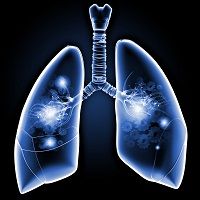Large-Scale Study Shows Dramatic Decline in Mortality Rates for ARDS
The largest study performed to date of mortality trends in patients with acute respiratory distress syndrome (ARDS) shows that the rate of mortality dropped significantly over a 16-year period.

The largest study performed to date of mortality trends in patients with acute respiratory distress syndrome (ARDS) shows that the rate of mortality dropped significantly over a 16-year period. Advances in critical care medicine are seen as a direct cause of the decline. The study abstract was released October 21 in the Online First section of the journal CHEST and will be presented at CHEST 2014, the annual meeting of the American College of Chest Physicians in Austin, Texas held October 25-30.
Researchers at Rutgers Robert Wood Johnson Medical School, Staten Island University Hospital, the University of Pittsburgh Medical Center, and Government Medical College obtained data from the National Inpatient Sample (NIS) database, the largest inpatient health-care database in the United States, encompassing data from approximately 8 million hospital stays per year. Out of this database, they were able to identify over 174,000 patients who had ARDS.
The study showed that there was a striking decrease in mortality rates, from 46.8% in 1996 to 32.2% in 2011, a 14.6% reduction. Surprisingly, from the years 2000 to 2005 alone there was an 8.9% absolute reduction in mortality rates.
According to Jared Radbel, MD, “While we cannot prove causation for the decreased mortality, we believe that collaborative advances in critical care medicine contributed to the overall decline. We assert that the sudden and sharp decrease in mortality from 2000-2005 can be attributed to the practice of low tidal volume ventilation.”
Source: American College of Chest Physicians